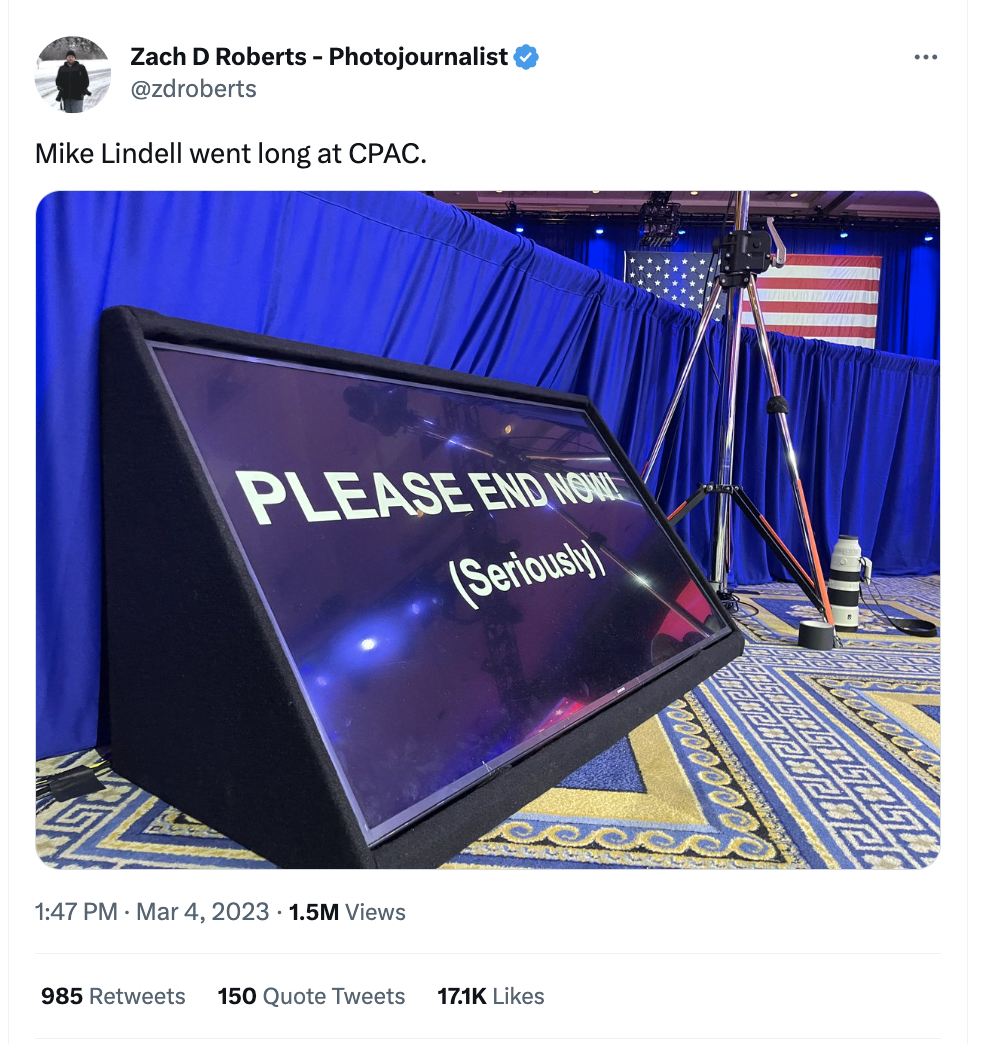Presenters: How to Finish on Time, Every Time
By Rob Biesenbach
September 2023
Earlier this year, an extraordinary thing happened that sent meeting organizers worldwide rocketing out of their seats in celebration.
One of the biggest challenges at any event is staying on schedule. It only takes one speaker running past their allotted time to throw a whole day — or conference — out of whack.
So when Mike Lindell (aka, “The Pillow Guy”) ran long at a major political gathering, the producers sent a not-so-subtle message to him via the “confidence monitor.” (That’s a screen facing the stage so speakers can reference their notes and slides.)
It said, “PLEASE END NOW! (Seriously)”
This is an extreme case, but it points to a problem that presenters at every level (and every political stripe) face: how to make sure you end on time.
Here are five tips to ensure that you never wear out your welcome — and can help your leaders and clients do the same.
1. Practice, practice, practice.
Most people, if they practice at all, run through their presentation in their head as they tab through the slides. That will never give you an accurate sense of the speech’s length because we read much faster than we speak.
Instead, you need to practice it out loud and on your feet, in a normal voice at a normal pace.
For an important talk, go through several rounds and create a detailed time-coded outline of your presentation, noting how long each section takes to get through.
2. Cut, cut, cut.
Let’s say you’re planning to speak for 45 minutes and take questions for 15 minutes. How many minutes of content should you prepare?
Surprisingly, the answer is not 45 minutes, because we inevitably run long. We improvise, interact and get caught up in the moment. A good rule of thumb is to plan 10-to-15 percent less content than you think you’ll need.
3. Order it by priority.
Arrange your presentation in descending order of priority — that is, the most important material up front and less important toward the end. (Though definitely save a valuable nugget for a strong conclusion.)
That way, if you do run short on time, you’ve given the most valuable points the attention they deserve.
4. Monitor and flex.
Most important, if you find yourself running behind schedule, don’t do what many presenters resort to: blazing through your last 10 or 20 slides at warp speed. You may be able to speed read but your audience can’t speed learn!
The best approach is to build flexible content and make cuts in the moment that the audience will never notice.
Let’s say that in your carefully prepared, time-coded outline, you have a 15-minute section where you plan to:
- Introduce your point (2 minutes)
- Offer three pieces of evidence (3 minutes)
- Tell a story (2 minutes)
- Take an informal poll (2 minutes)
- Open it up for group discussion (6 minutes)
If you’re running behind, then you could cut a proof point or eliminate the poll or shorten the group discussion. Of course, this will require you to bring your outline to the podium and periodically check it to see whether you’re on track.
5. Keep your options open.
But what happens if you overestimate your time and run out of content? That can be a real hazard if you have the kind of audience that is reluctant to speak up or participate.
With the flexible approach in the example we just discussed, you could tell a second story, add a table exercise to the discussion or allow time for questions.
Another option is to create “bonus content” and tack it to the end of the deck. Position it this way: “That covers the essentials. We have a bit more time to dig deeper if you’re interested.”
Finally, if you’re coming up just a few minutes short, then it’s OK to end a little early. Audiences generally appreciate the gift of time — which is a far better alternative to robbing them of it!



